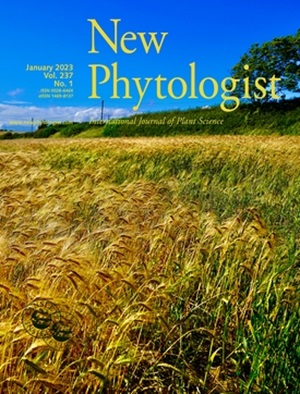Population genomics of the gametophyte-only fern Vittaria appalachiana provides insights into clonal plant evolution
IF 8.3
1区 生物学
Q1 PLANT SCIENCES
引用次数: 0
Abstract
- How asexually reproducing organisms maintain genetic diversity and adaptive potential is a long-standing question in evolutionary biology. Asexual lineages have historically been thought of as evolutionary dead ends, yet some exhibit remarkable persistence through time.
- The gametophyte-only fern Vittaria appalachiana is a clonal eukaryote, the focus of extensive study due to its peculiar habit and life history, and is an excellent system to explore the consequences of asexuality. Using reduced representation sequencing and life cycle simulations, we assess theoretical expectations for genomic consequences of long-term asexual reproduction and test hypotheses about its origin and demographic history.
- We show that V. appalachiana colonies are not patches of single genotypes but are mosaics of genetic diversity, and the accumulation of mutations in the absence of recombination plays an important role in driving this diversity. We identify increased genomic variation, excess heterozygosity, decreased population differentiation, and increased effective population size, all of which are consistent with the expectations for prolonged clonality. Our analyses support the hypothesis that the loss of sexual reproduction in V. appalachiana occurred during the Last Glacial Maximum.
- Our results from empirical and simulation-based analyses illuminate how an asexual eukaryote generates, retains, and partitions genomic diversity.
求助全文
约1分钟内获得全文
求助全文
来源期刊

New Phytologist
生物-植物科学
自引率
5.30%
发文量
728
期刊介绍:
New Phytologist is an international electronic journal published 24 times a year. It is owned by the New Phytologist Foundation, a non-profit-making charitable organization dedicated to promoting plant science. The journal publishes excellent, novel, rigorous, and timely research and scholarship in plant science and its applications. The articles cover topics in five sections: Physiology & Development, Environment, Interaction, Evolution, and Transformative Plant Biotechnology. These sections encompass intracellular processes, global environmental change, and encourage cross-disciplinary approaches. The journal recognizes the use of techniques from molecular and cell biology, functional genomics, modeling, and system-based approaches in plant science. Abstracting and Indexing Information for New Phytologist includes Academic Search, AgBiotech News & Information, Agroforestry Abstracts, Biochemistry & Biophysics Citation Index, Botanical Pesticides, CAB Abstracts®, Environment Index, Global Health, and Plant Breeding Abstracts, and others.
 求助内容:
求助内容: 应助结果提醒方式:
应助结果提醒方式:


